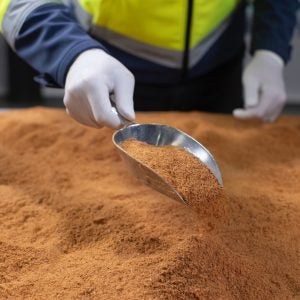How Modified Atmosphere Packaging Prevents Food Product Discolouration

There are only a few situations in which people like to experiment with food products in different colours. Most of the time, we trust our senses and the colours we know. With natural food products, it can be risky for producers: we can’t completely control nature, and products will eventually change colour.
In this article, we’ll look at the factors that cause food products to change colour and how Modified Atmosphere Packaging can prevent or slow down this process. We’ll also talk about why you’d want to prevent discolouration.
What causes food to change colour over time?
Food can change colour over time for a variety of reasons, including oxidation, enzymatic reactions, microbial growth, and exposure to light.
Oxidation is a chemical reaction that occurs when oxygen in the air comes into contact with certain molecules in food, causing them to break down and change colour. This is particularly common in fruits and vegetables that turn brown when cut or exposed to air.
Enzymatic reactions are chemical reactions that occur when enzymes in food react with other molecules in the food, causing a colour change. For example, the enzymes in fruits and vegetables can cause them to ripen, which can cause a change in colour.
Microbial growth can also cause food to change colour. Microorganisms such as bacteria, yeasts and moulds can grow on food and change its colour, texture, and flavour.
Exposure to light can also cause food to change colour. Certain food products like fruits and vegetables can be sensitive to light and may turn brown or discolour when exposed to light for an extended period of time.
All of these factors can be minimised by modified atmosphere packaging (MAP) which can slow down the process and preserve food for a longer time.
How does Modified Atmosphere Packaging prevent food from changing colour?
Modified atmosphere packaging (MAP) involves altering the composition of the air inside a package to extend the shelf life of food. One way it can prevent food from changing colour is by controlling the amount of oxygen in the package.
Oxygen can cause certain foods, like fruits and vegetables, to ripen and change colour. By reducing the amount of oxygen in the package, the rate of oxidation and colour change is slowed.
Additionally, MAP can also control the amount of carbon dioxide, which can prevent the growth of microorganisms that can cause discolouration.
Why do we want to prevent food from changing colour?
Preventing food from changing colour is important because colour is one of the key factors that consumers use to assess the quality and freshness of food.
A change in colour can indicate that the food is spoiled or no longer fresh, even if the food is still safe to eat. This can cause consumers to reject the food and result in wasted food and financial losses for producers and retailers.
Also, colour change can also be an indication of the food losing its nutritional value and taste. In fruits and vegetables, colour change can indicate that the product has started to ripen and lose its firmness, which can affect the taste and texture of the food.
By preventing food from changing colour, it can help extend the shelf life of the food, reduce food waste, and increase consumer confidence in the food.





